Wall Paintings Norman Adams 1972
John Bunyan’s ‘Pilgrim’s Progress’ was the starting point for this symbolic painting, but it is certainly not an illustration of the book.
The subject is the idea of a progression from every day, material experience towards spiritual existence in Paradise. The painting on the wall left of the high altar is about our struggles in the natural world and on the other wall the painting is about the journey through death to paradise. The series has been designed so that the final Paradise painting will be seen in the best light during daytime.
Wilderness of this world
Most of the motifs used - developed more fully later on - are buried somewhere in the first painting. This is a dark and sinister work - confused and cluttered up. It is a powerhouse shaking itself to pieces with its own neurotic energy. It is something of a maze: it is a nightmare; but underneath the chaos there is a strong pattern of order.
Slough of despond
The title refers to the lower part of the second painting. The sun, or the light of God, dries up the arrows. Black, crow-like images tear themselves away from the chaos and flutter back towards the wilderness. The desolation peels itself away, revealing a golden light - it is a glimpse of heaven from the darkness. The red band that runs through both of these painting symbolises the passage of the hero (Christian) and the purple band (in the first painting) symbolises death. The red and purple bands run parallel some of the time and at other times the bands cross.
The interpreter
The third painting began as the House of the Interpreter in ‘Pilgrim’s Progress’ but became ‘The Interpreter’. It completes the first stage, which begins with the Wilderness, passes though the Slough into the soft pinks and greys of the upper part of that panel, where the dramatic yellow lifts the attention up to the cool blues and violets. The painting represents a sort of celestial computer; much of the restless substance of the former painting being fed into its quiet, heavenly hues.
Vision of the cross
This is a strong contrast beside the Interpreter. It is a straightforward picture - an explosion of passion, and a direct vision. The imagery is the same as the first paintings, but here is freer and more natural after its passage through the Interpreter. The stiff arrows have become like a flutter of birds. The design is free and flowing and its only straight lines are those of the Cross. It blooms like a flower, but it is also a fire.
At this moment in ‘Pilgrm’s Progress’ Christian loses the burden he has so far carried through life. He still has a long journey ahead and must do battle with many terrifying monsters. Therefore, the last painting on the wall is:
Apollyon
In his fight, Christian’s adversary is materialism (death). It is a vast, scaly tangle spattered with blood. It is the most violent painting of the series and the hero is symbolically depicted in the bottom right corner.
The colour red is a device linking the wilderness and the Slough to become a fire at the cross and blood on Apollyon.
Death and transfiguration
On the other wall the paintings are more serene and more obviously continuous: progress from Death through Transfiguration to Paradise. Death is a dark stain - a sleep, a shadow, a vacuum. Slow-moving forms like black birds drift through the shadowy stain. Much of the earlier imagery here assumes a quiet dignity.
After the darkness comes the Transfiguration section. This is a furnace of light - souls dissolving and reforming. Its activity has much in common with the mood of the wilderness except that now everything is bathed in light. It is a heavenly powerhouse. All is under control. There is no fear, as in the wilderness.
Paradise
This is the climax and is really more than one painting. The side sections appear to fall away - expelled from the white heat of the centre of paradise. (The mediaeval ‘quatrefoil’ motif - four petals radiating from a centre which appears as a still, wheel-like image in the wilderness, here becomes the free and exuberant motif for the angels in Paradise.)
This is truly a ‘Glad Day’ painting - a kind of sunrise.
There is a close link between the various art forms: music, poetry and painting. In particular, Norman Adams has found inspiration from the poetry of William Blake and the music of Wagner. As you look at his work, passages of the Bible, music and other works of art may come to your mind.
This is a symbolic canvas representing some of life’s experiences through which a sense of purpose and meaning may be found. Yet there are no people in the painting. You are Pilgrim, wherever you can see yourself!
Start with the painting on the left of the high altar


